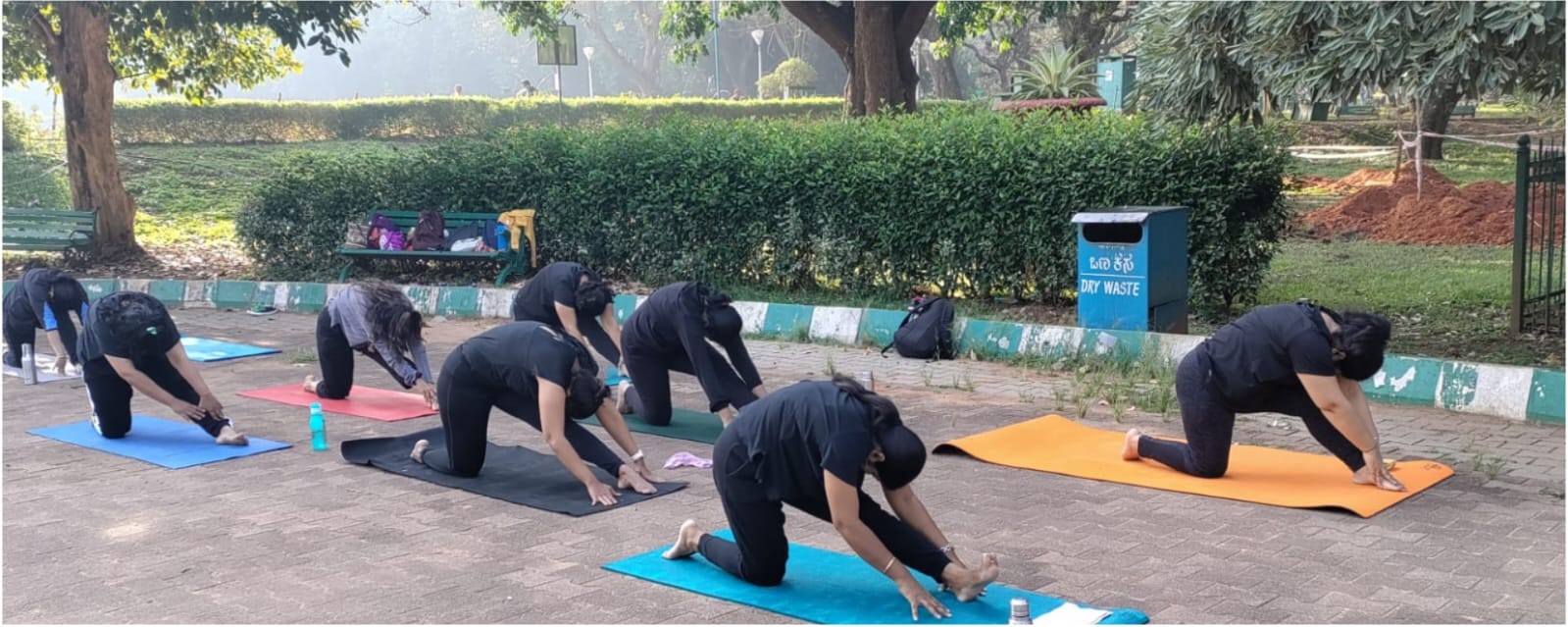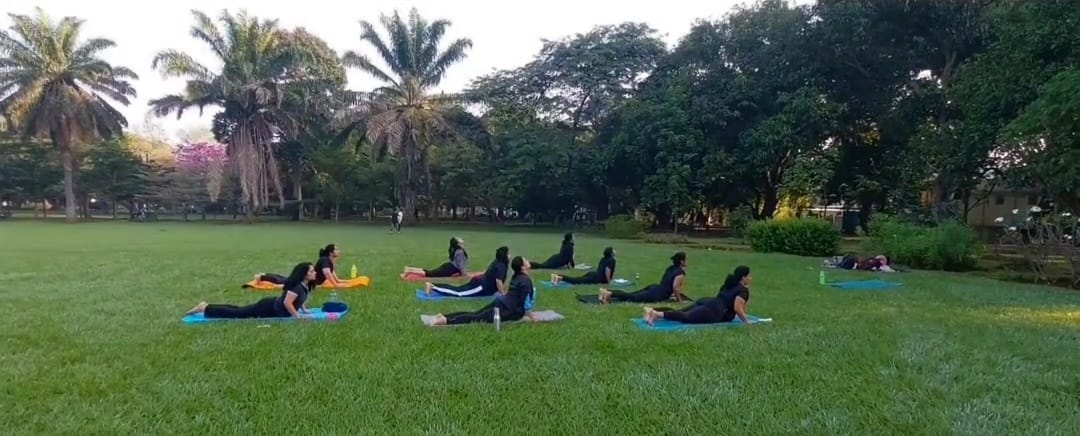
Welcome to yoga Wellness
(Personal, Group, Corporate Yoga Sessions)

Start your Fitness Joueney
(Give your body the fitness and flexibility that is required)

Yoga is a fantastic practice that combines physical postures, breathing exercises, meditation, and ethical
principles to promote holistic well-being. It originated in ancient India and has since spread worldwide due
to its numerous benefits for the body, mind, and spirit.
There are various styles of yoga, each with its own emphasis and approach. Some popular styles include
Hatha yoga, which focuses on physical postures and breathing techniques; Vinyasa yoga, which emphasizes
flowing movements synchronized with breath; and Kundalini yoga, which incorporates dynamic breathing
techniques, meditation, and chanting.
People practice yoga for various reasons, including stress reduction, increased flexibility and strength,
improved concentration, and spiritual growth. Its holistic approach makes it suitable for people of all
ages and fitness levels, and it can be adapted to individual needs and preferences.
Yoga is a dance between control and surrender — between pushing and letting go — and when to push and when
to let go becomes part of the creative process, part of the open-ended exploration of your being.

Yoga poses, also known as asanas, are physical postures practiced in yoga. These poses are designed to
promote physical strength, flexibility, balance, and mental focus. They vary widely in complexity and
intensity, ranging from simple stretches to challenging balance poses.
Yoga poses can target specific parts of the body or have overall benefits for the entire body-mind system.
For example, forward bends like Uttanasana stretch the hamstrings and spine while calming the mind, while
backbends like Urdhva Mukha Svanasana strengthen the back muscles and energize the body.
There are hundreds of yoga poses, each with its own name, alignment cues, and variations. Some poses are
seated, some are standing, and others are done lying down or inverting the body.
Group yoga classes offer a multitude of benefits that extend beyond individual practice. The sense of
community fostered within a group setting creates a supportive environment where practitioners can feel
encouraged and motivated.
This collective energy not only enhances one's own practice but also facilitates a deeper connection with
others. The presence of a qualified instructor provides guidance, support, and personalized feedback,
ensuring safe and effective practice for all participants. Additionally, group classes offer variety and
exploration, allowing practitioners to discover different yoga styles, levels, and techniques.
Through shared experiences, laughter, and camaraderie, group yoga classes become not only a place for
physical exercise but also a space for social connection, personal growth, and holistic well-being.
